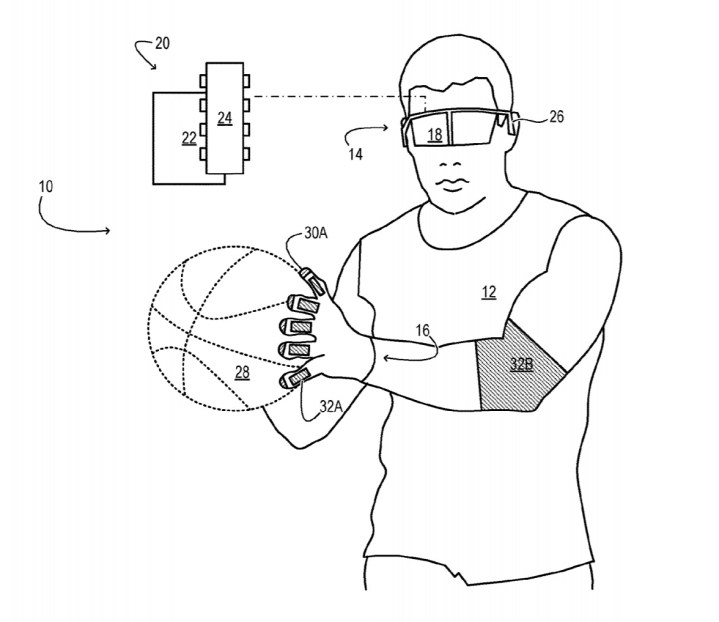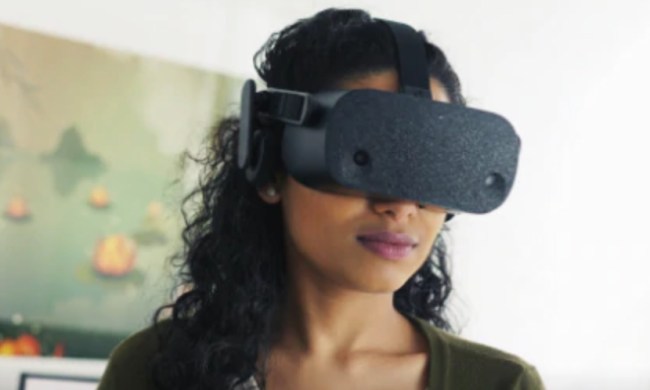
Microsoft’s patent for an augmented and virtual reality accessory could make interacting with the virtual world feel more realistic by giving users more tactile feedback in the real world. The patent for a device called an electrostatic side clutch was originally filed in 2017 and was recently only publicly published by the United States Patent and Trademark Office. The side clutch, which Microsoft illustrated as an arm-worn accessory with haptic feedback motors, allows users to feel resistance when interacting in a virtual environment.
“While mixed reality and virtual reality systems may provide an immersive visual and auditory experience, such systems may not provide a satisfying tactile experience for the user, in which virtual objects feel like real objects,” Microsoft said, noting that its electrostatic side clutches “may be used for tactile feedback in mixed reality and virtual reality settings.”
If you’re playing a basketball game, for example, wearing the side clutch device on your wrist could allow the game to mimic drag as you’re attempting to make a free throw shot in NBA 2K18. “In particular, haptic device may be configured to provide resistive contact sensation in response to detection of contact between the body of the user in a virtual display object projected into a field of view,” Microsoft wrote in its patent filing. Potentially, the system could even allow you to feel if you’ve been illegally hand-checked in a game of virtual hoops.
In addition to the arm sleeve, a glove may also be worn to replicate the real-world resistive sensation. Microsoft detailed different configurations for how its side clutch, sleeves, and gloves would work, but in essence, the side clutch is coupled to the headset to allow the device to apply the resistive force at the appropriate time in VR or AR gameplay. The electrodes are placed on regions of the body that could move, like your hands, arms, or legs.
Since Microsoft officially entered the mixed reality space with the debut of HoloLens, it has been researching different ways users could interact with the virtual environments. A recent Microsoft patent hinted at using a wand to control the virtual world, and the company showed off some of its work in the augmented reality space at its Build developer conference.


